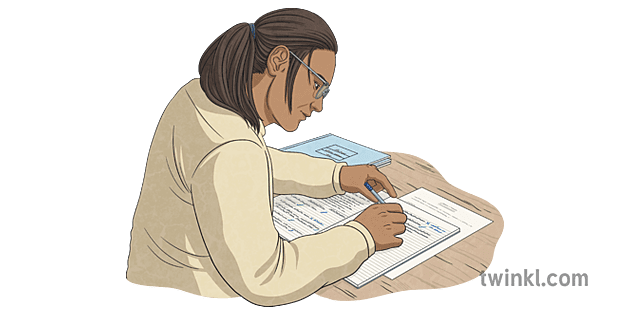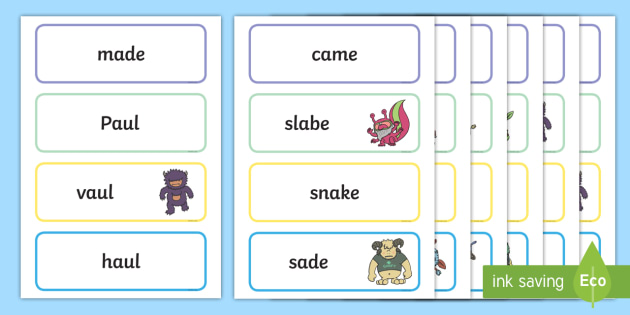Year 1 Phonics Screening Check
Phonics Screening Check
The phonics screening check is an informal test that children will need to complete at the end of year 1. During the test, which is designed to test their ability to decode words using their phonics knowledge, children will be required to read a mixture of 40 real and nonsense words.
The phonics screening check is an important part of children’s early phonics education. While it isn’t conducted under normal test conditions and won’t determine whether or not they progress into year 2, it’s a crucial assessment as it shows how well their reading and phonics skills are developing.
Over the course of this handy Twinkl guide, we’ll answer some of the most frequently asked questions about the screening test, including ‘what is the phonics screening check?’ and ‘when is the phonics screening test?’. We’ll also provide some useful guidance, tips and resources to help you prepare your child for the screening and give them the best chance of success possible.

What is the phonics screening check?
So to start off with, what is the phonics screening check and how is it conducted?
The phonics screening check, or phonics screening test, is an informal test that year 1 pupils will need to undertake. This test is part of their education in phonics, which is a method through which children are taught how to read and write, and it tests them on their ability to read and decode a series of words.
According to the Department for Education, it's a short, light-touch assessment that should take less than ten minutes to complete. It usually takes place on a one-to-one basis between a pupil and their teacher.
What will children be tested on in the phonics screening check?
Now that we’ve answered the question of ‘what is the phonics screening check?’, we’ll explain what happens during the check and the criteria that children will be assessed on.
But what is the phonics screening check's purpose? The phonics screening check assesses children on how well they can decode certain words. Decoding means sounding out an unfamiliar written word. To do this, children will need to be able to recognise letters and the sounds that they represent. This is an important part of achieving reading fluency!
During the check, children will be asked to decode a series of 40 different words. While most of these will be real words, there will also be some pseudo-words mixed in. These are sometimes known as alien words, and they will be accompanied by an image of an alien to help children identify them. These words are phonetically similar to real words, but don’t have any meaning. They’re included in the check so that children will need to use their decoding skills and won’t be able to rely on memory alone.
The phonics screening check is made up of two distinct sections:
- In Section 1, children will be encouraged to read out words that follow simple structures such as CVC (consonant-vowel-consonant) and CVCC (consonant-vowel-consonant-consonant). These words will contain the Grapheme-Phoneme correspondences that pupils will have learned about in previous phonics levels, as well as some consonant and vowel digraphs.
- In Section 2, children will have some more challenging words to decode that follow complex structures including CCVCC, CCCVC and CCCVCC. They’ll also encounter words with split digraphs, trigraphs and digraphs that can be used to represent more than one sound.
When is the phonics screening test?
Since the question of ‘what is the phonics screening check?’ is behind us, when is the phonics screening test? Here, we’ll explain when the check happens so that you’ll know how much time you have to help your children get ready for it.
The phonics screening test takes place in early June, as children approach the end of year 1. In 2022, the screening check will happen on the week starting at the 6th of June.
So now that we've answered the question of 'when is the phonics screening test?', let’s go through some other common questions and concerns.
What is the pass mark for the phonics screening check?

To pass the phonics screening check, children will need to correctly decode 30-32 of the 40 words that they will be shown. This standard was set in 2013 and continues to be valid today.
What happens if a child fails the phonics screening check?
By now, we've answered the question of 'when is the phonics screening test?'. This means you'll know how long you've got to practise with your learners and help them prepare. However, some children might find the phonics screening check slightly trickier and may have trouble decoding some of the words. So what happens if a child doesn't pass the screening check?
If a child does not achieve the required passing grade during the phonics screening test, they will be given extra support over the course of the next school year to improve their abilities at reading and decoding words. At the end of year 2, they will then be able to retake the screening test.
As the screening check isn’t a formal assessment, failing it will not prevent a child from progressing into year 2. However, it’s still important that they perform well and achieve a good mark. Because the phonics screening check tests children on their decoding skills, it’s a strong indicator of their reading ability.
If a child does not achieve the pass mark during the year 2 retake, a support plan will remain in place to help them as they progress into year 3.
How do I prepare my children for the phonics screening test?
Now that we know the answers to ‘what is the phonics screening check?’, ‘when is the phonics screening test?’ and ‘what will children be assessed on?’, you’ll no doubt be wondering how you can best help your little ones to prepare for them.
By the time that they’re about to take the phonics screening check at the end of year 1, children will have gone through five of the six phonics phases. During these phases, children will have learned all of the 40 phonemes (units of sound) and many of the graphemes that represent them. They will have also learned about digraphs, trigraphs, adjacent consonants and will have practised reading polysyllabic words.
While it seems like there’s a lot of ground to cover when getting them ready for the screening check, knowing how the test is conducted and knowing the answer to 'when is the phonics screening test?' will help you figure out the best ways to get your learners prepared. Plus, there are plenty of activities, exercises and simple things you can do to support them both in school and at home, such as:
- Reading with your child: Taking some time out every day to read with your child can be greatly beneficial for their phonics learning and screening preparation. You could try reading some unfamiliar books and stories with them as well as ones they’ve already read, as this will expose them to some new, unfamiliar words and spellings.
- Breaking down words: If you and your child come across a new word, and they’re having trouble sounding it out, try segmenting it into its different sounds with them and then blending it together again.
- Brush up on phonics terms: Even though there are many confusing phonics terms, knowing about them will help you to understand what’s expected of your child and where they can improve.
And if a child struggles with decoding words, remember the following tips:
- Don’t worry. Children learn at different rates, so relax and work at their own pace.
- Be positive. The goal is to encourage children to read fluently and, once reading, to love doing it. Getting annoyed or frustrated can only be detrimental to the development of their skill.
- Try another route. If a child doesn’t quite understand the word they’ve just decoded, explain its meaning.
- Follow directions. The English language is read from left to right, so make sure to point out that they need to say each sound in the word from left to right.
- Point and blend. Blend the sounds being read out by pointing to each letter (or letter group) while reading and running a finger under the whole word.
Here is an example check:

